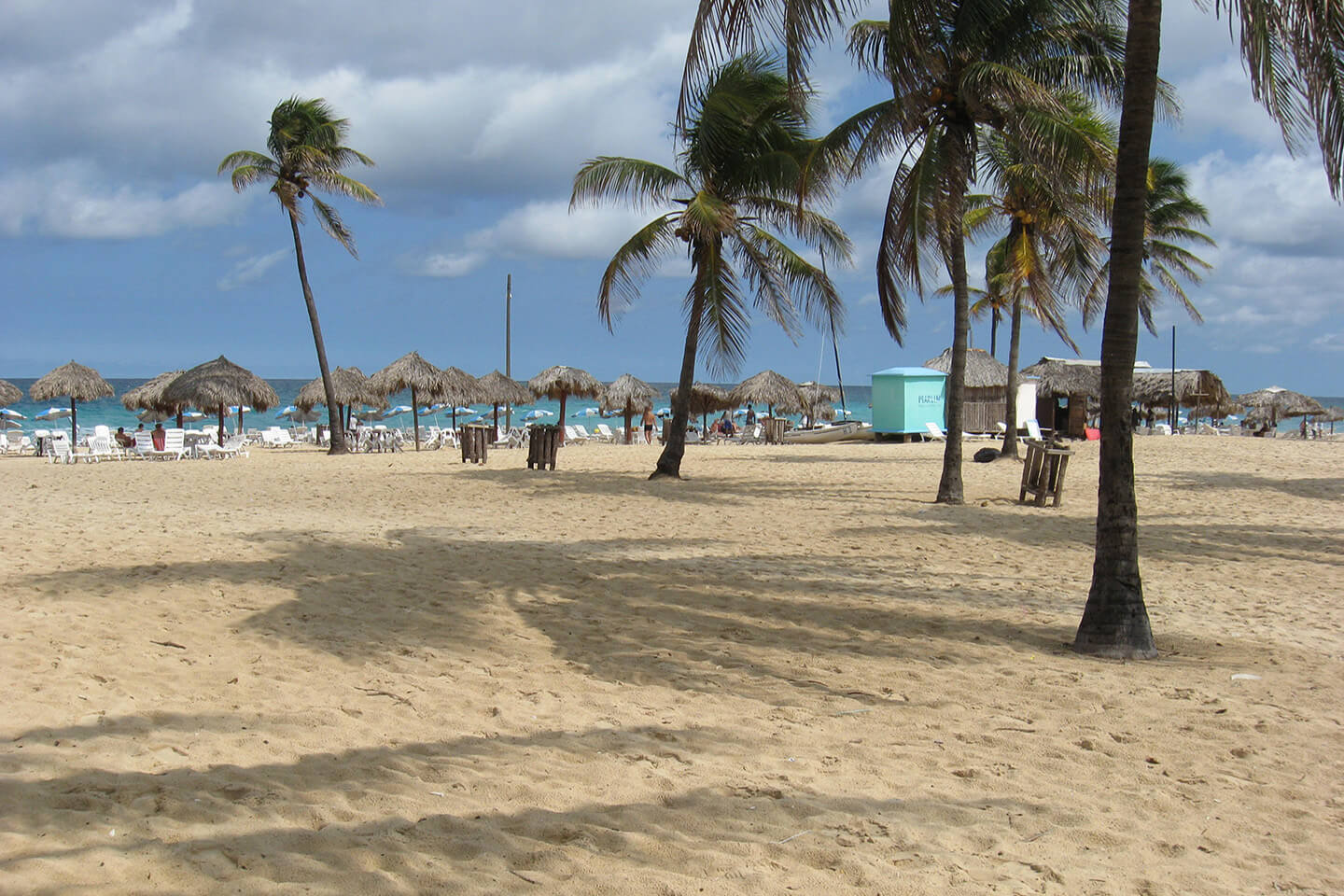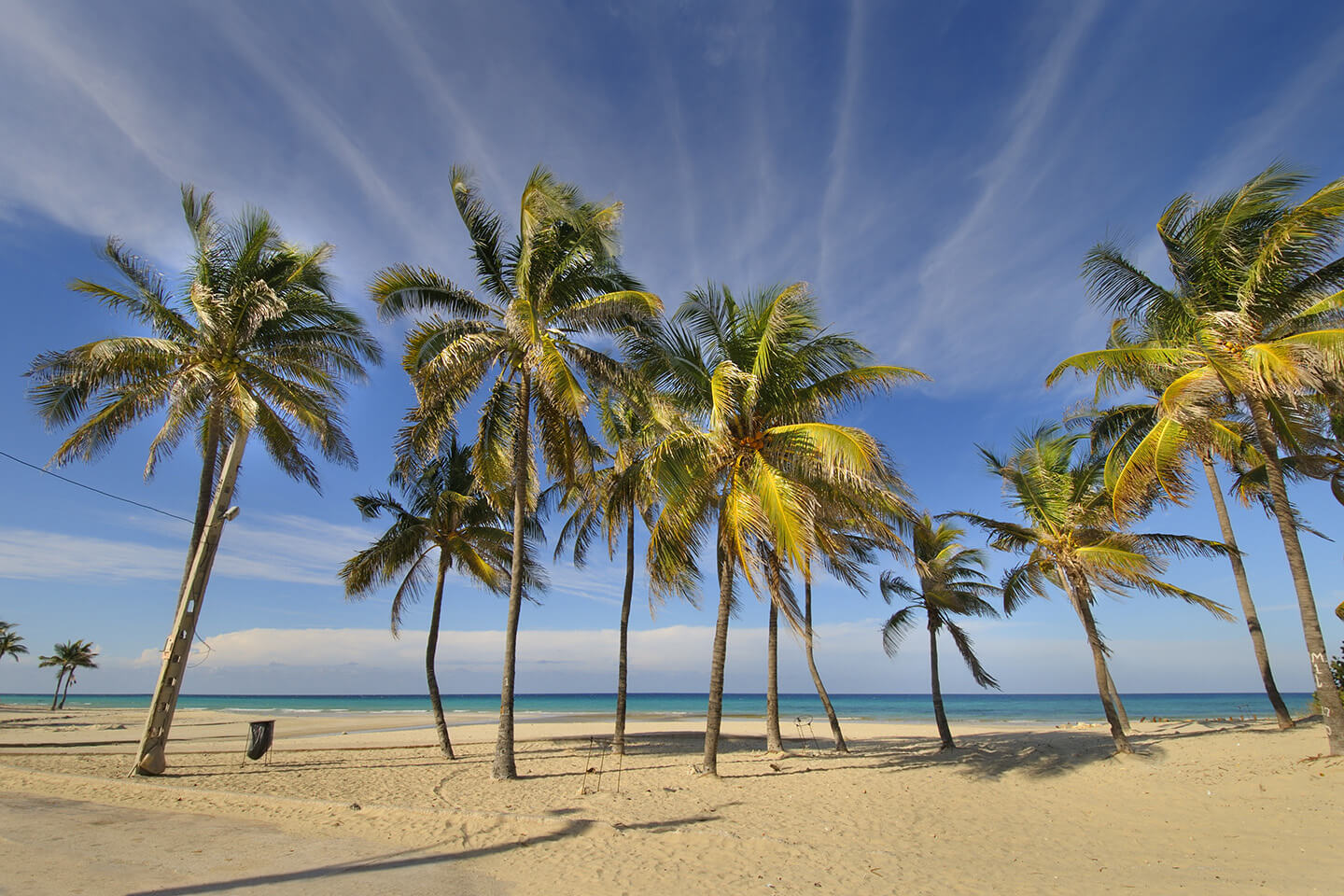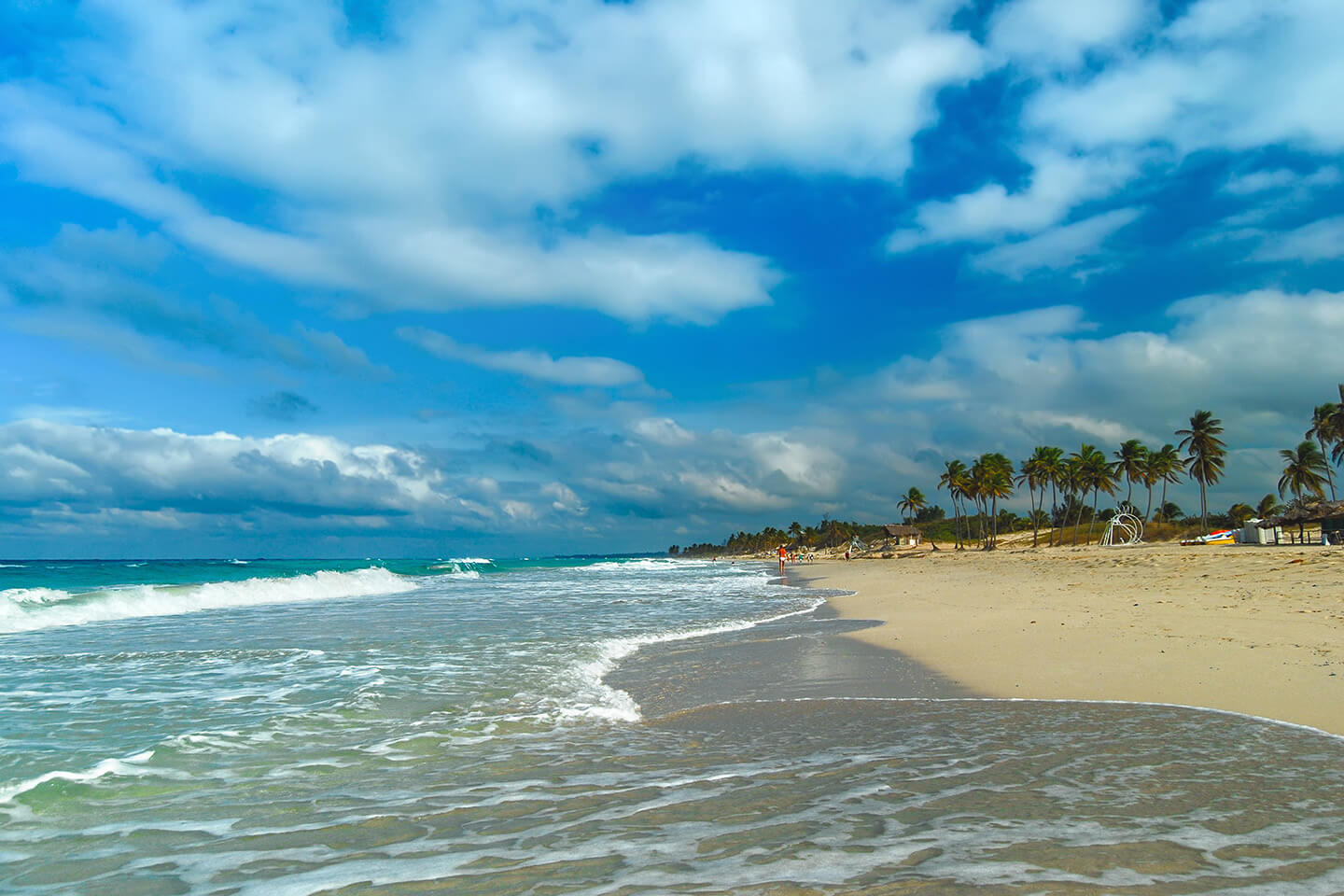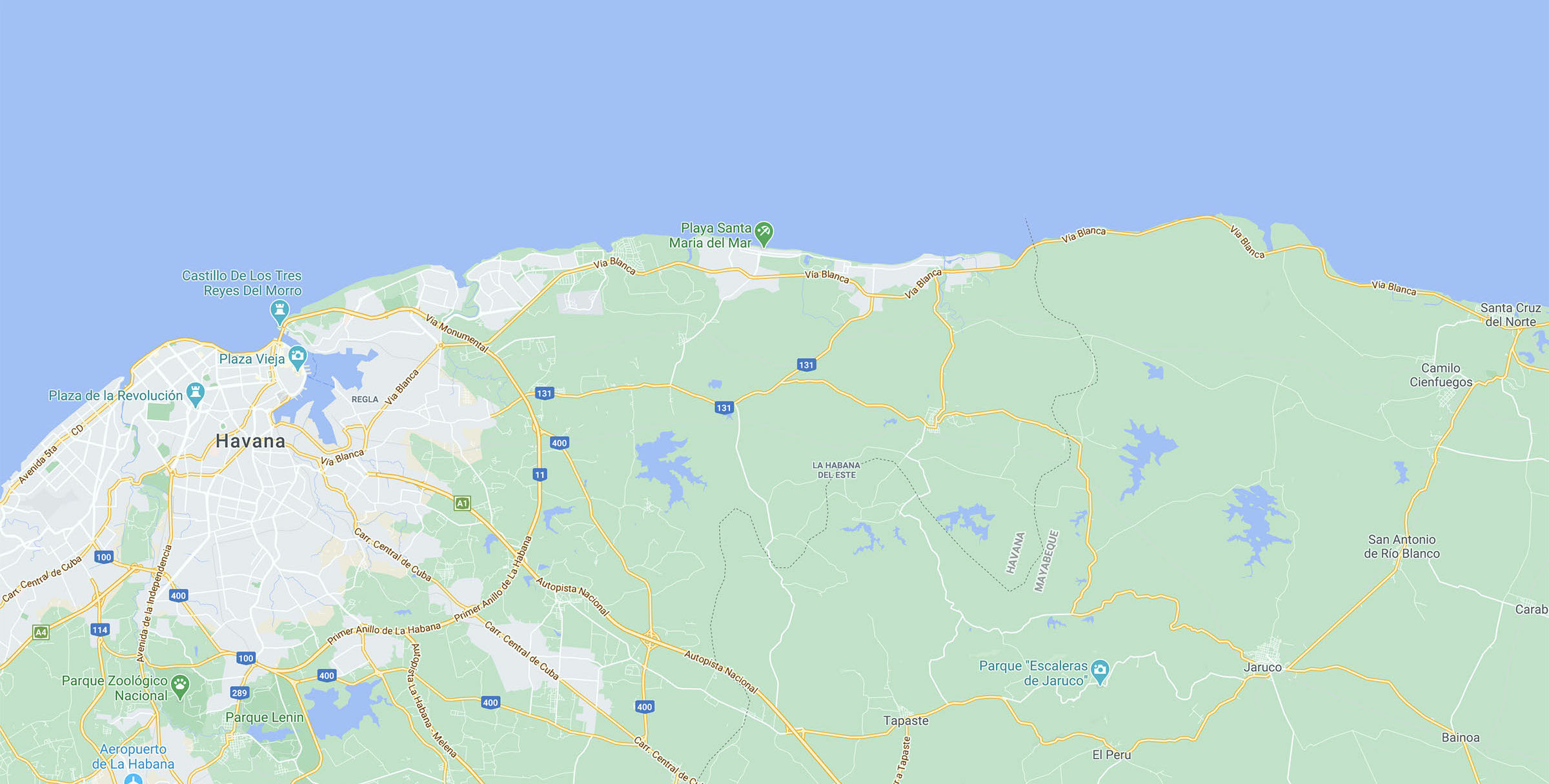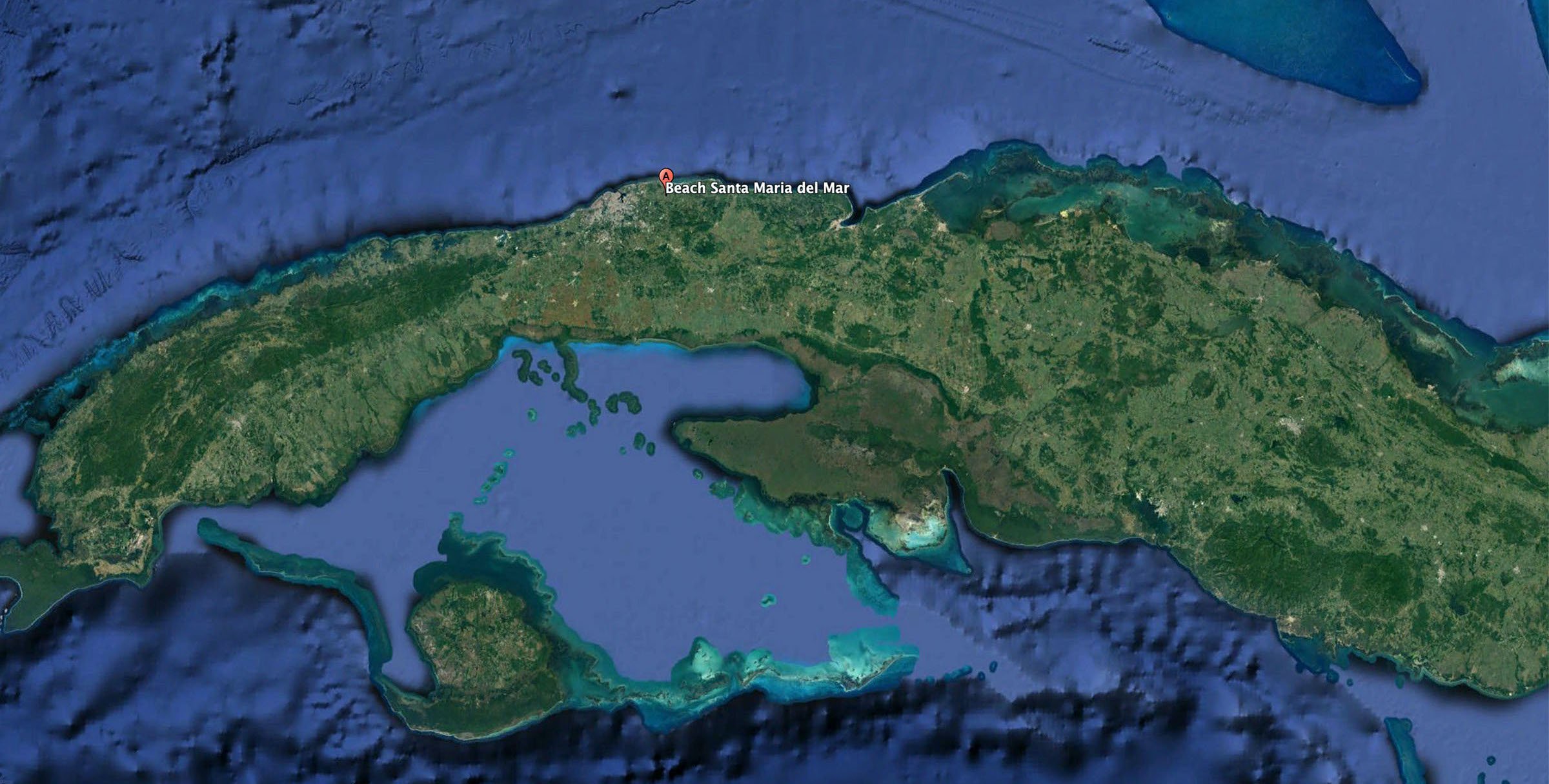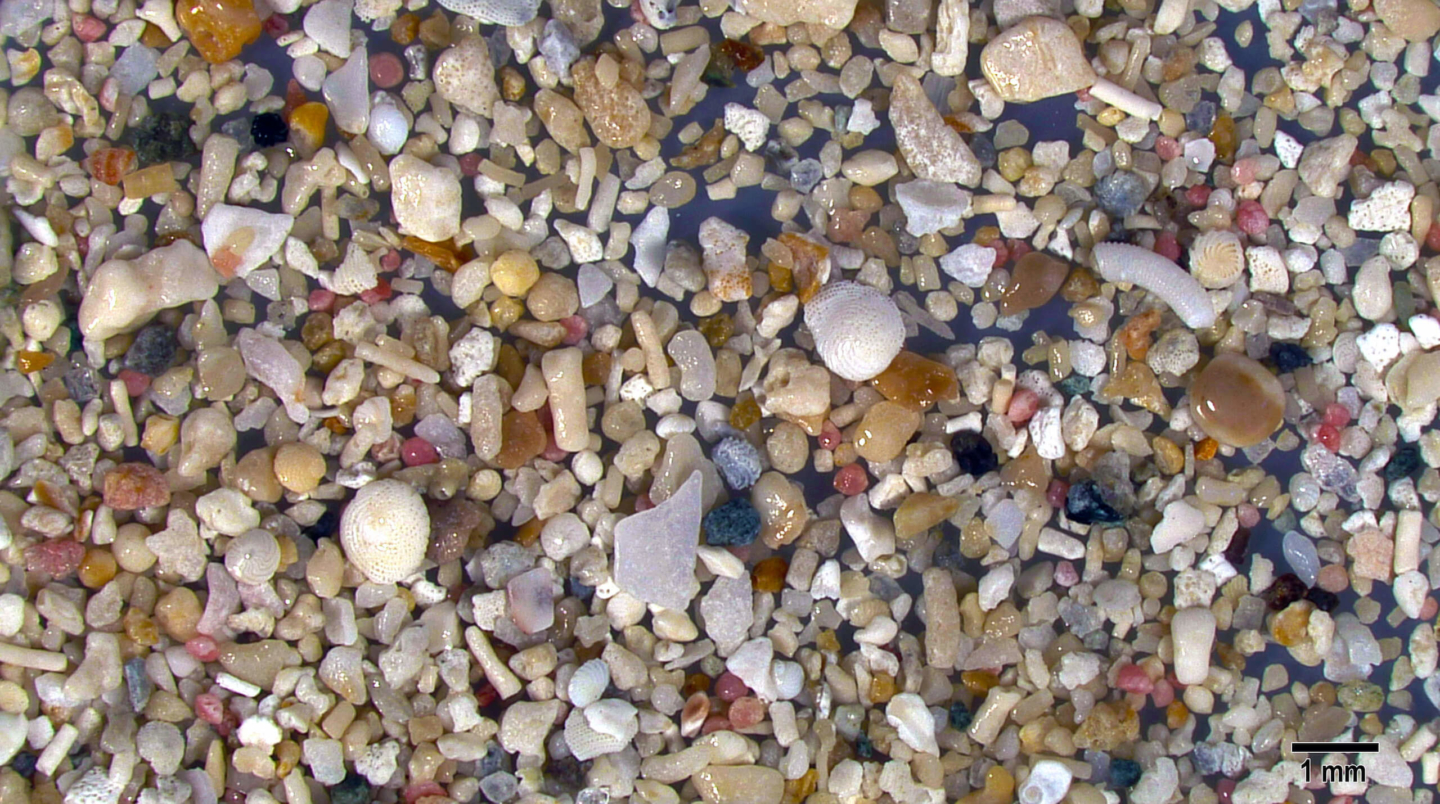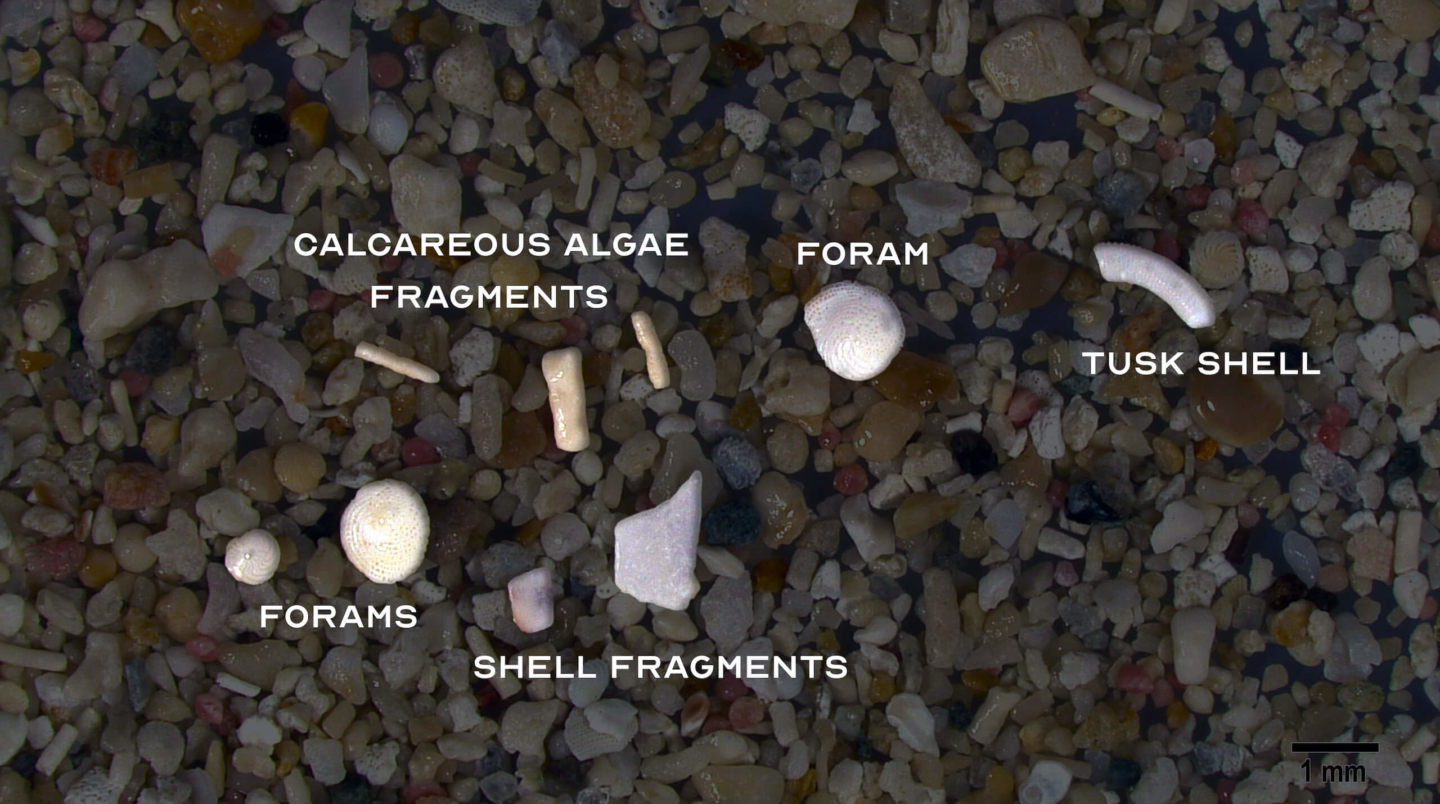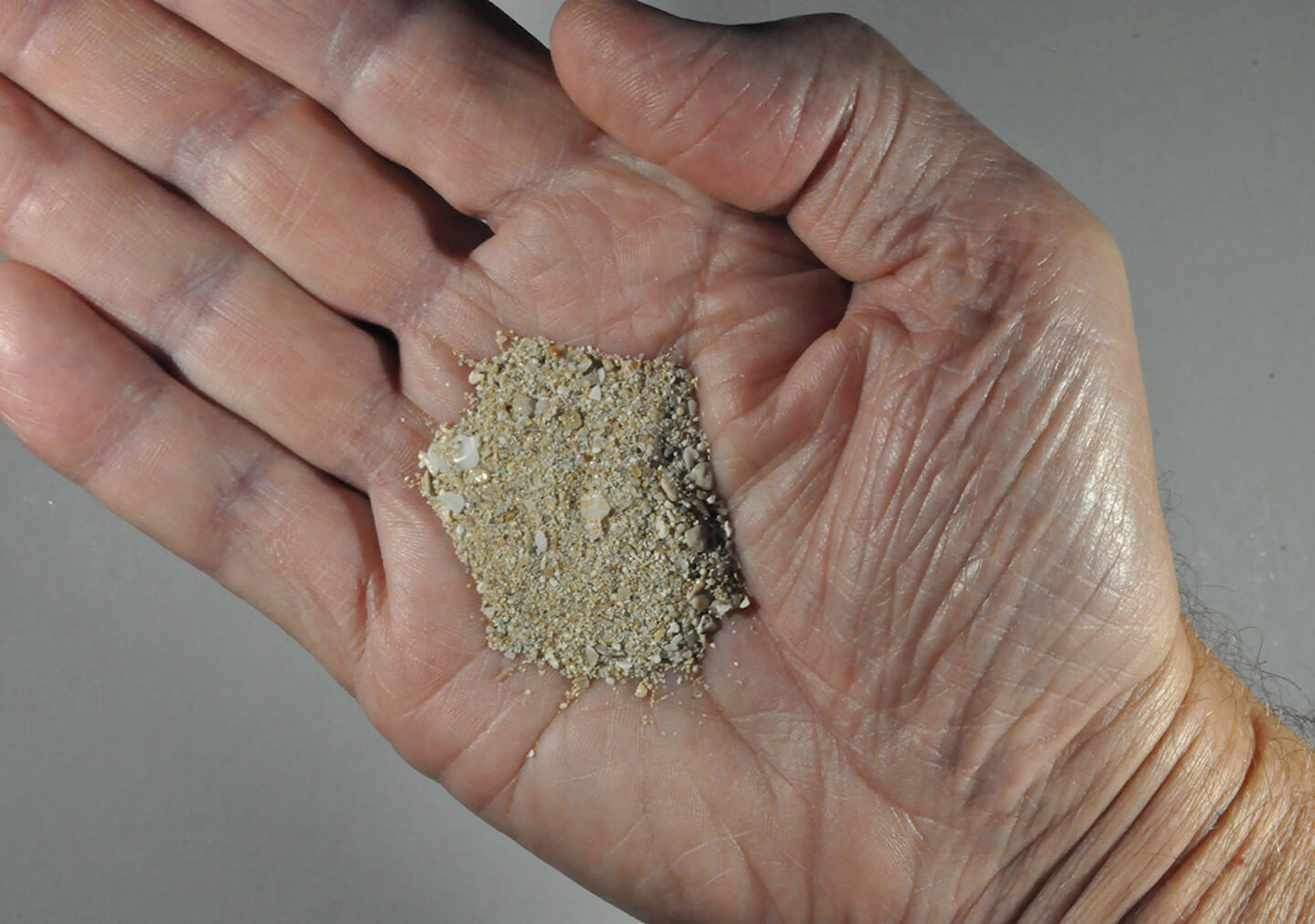
The seas surrounding Cuba have a varied and abundant biomass including diverse corals, soft sponges, sea grass beds, and more than 7000 species of fish, crustaceans and other marine life. The sand of Santa Maria del Mar is primarily biogenic representing microscopic components of the surrounding marine biomass.
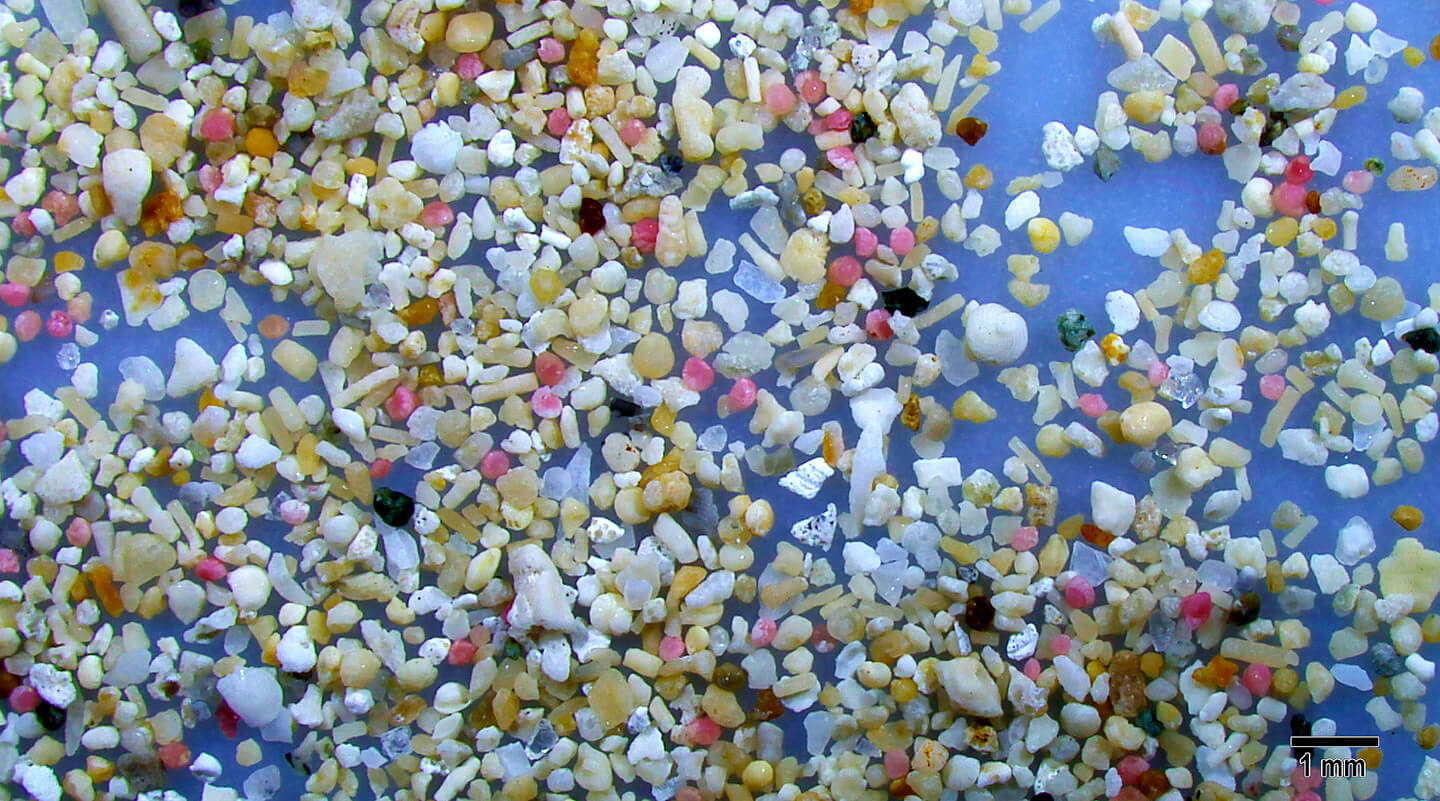
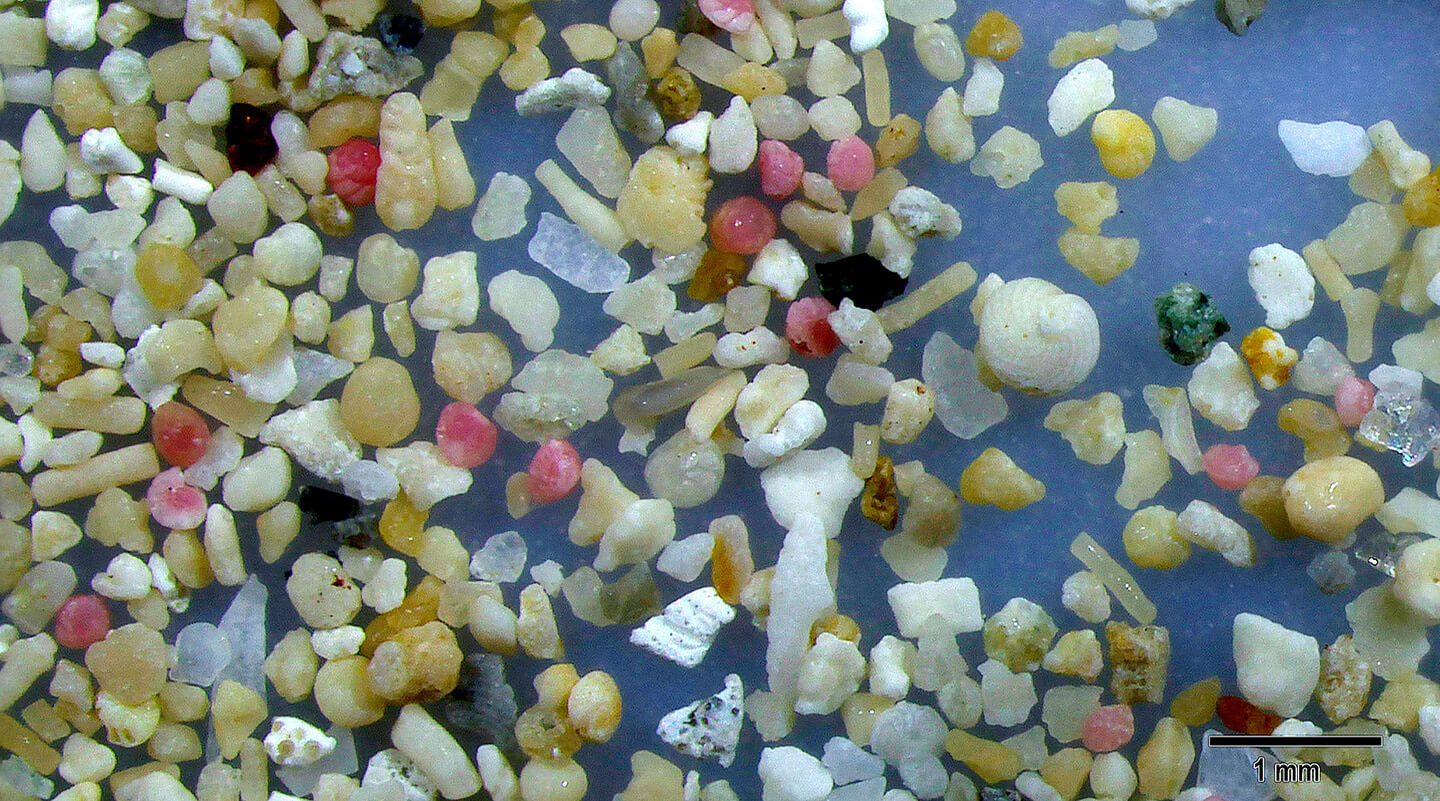
Geographic Overview
Cuba is the largest island in Greater Antilles. Cuba is surrounded by more than 4000 islands and cays and is known for its white sand beaches that have lured visitors for decades. Santa Maria del Mar is part of a chain of beaches located 12 miles east of Havana.
Sand Gallery
A mixture of biogenic sand grains with different species of foraminifera (forams) including multiple small dark pink forams.
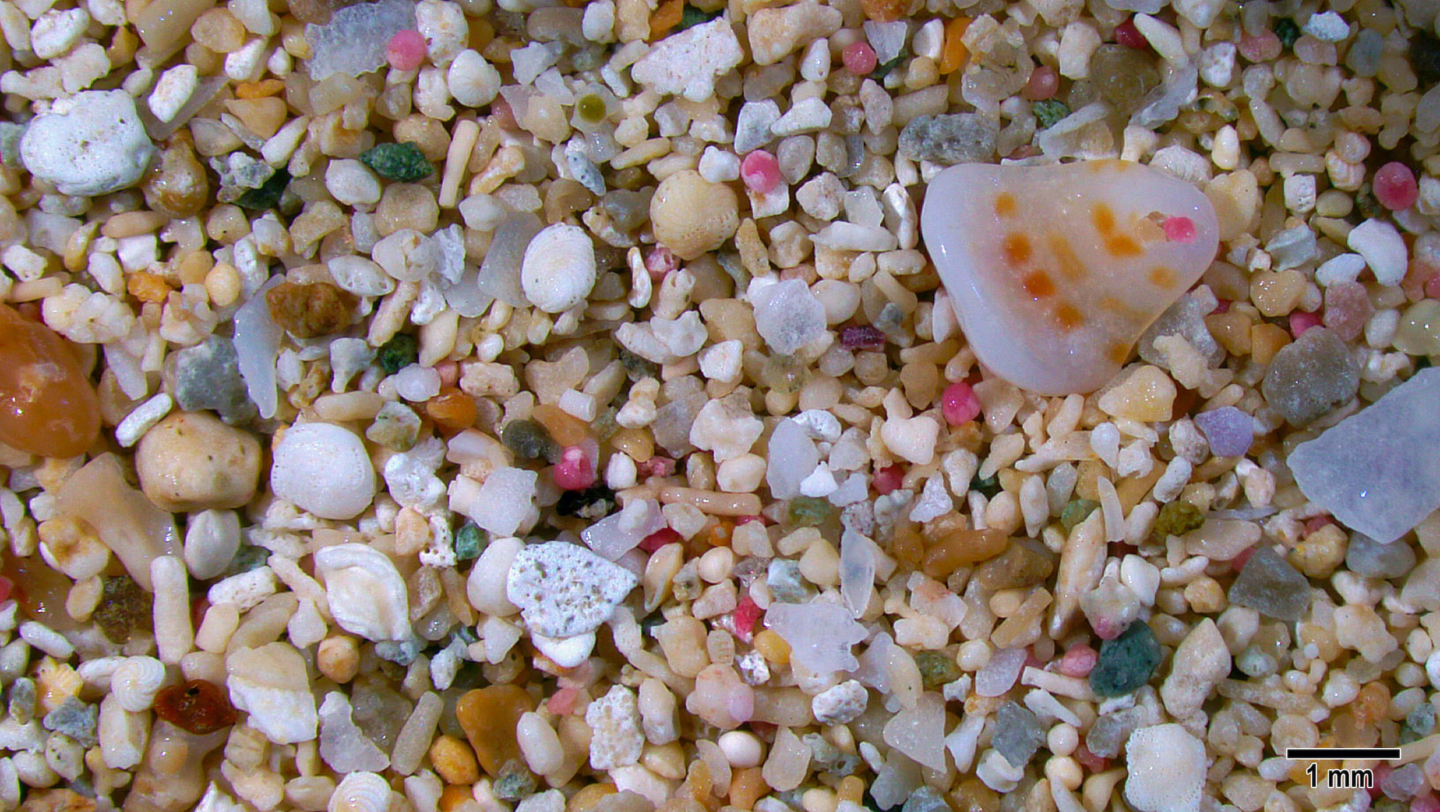
A colorful large triangular shaped bivalve shell fragment is at the upper right and an opaque shell fragment on the right edge of this image. Several dark pink foraminifera as well as larger tan and white foraminifera are also present. Rod shaped tan and white fragments are probably bits of calcareous coralline algae.
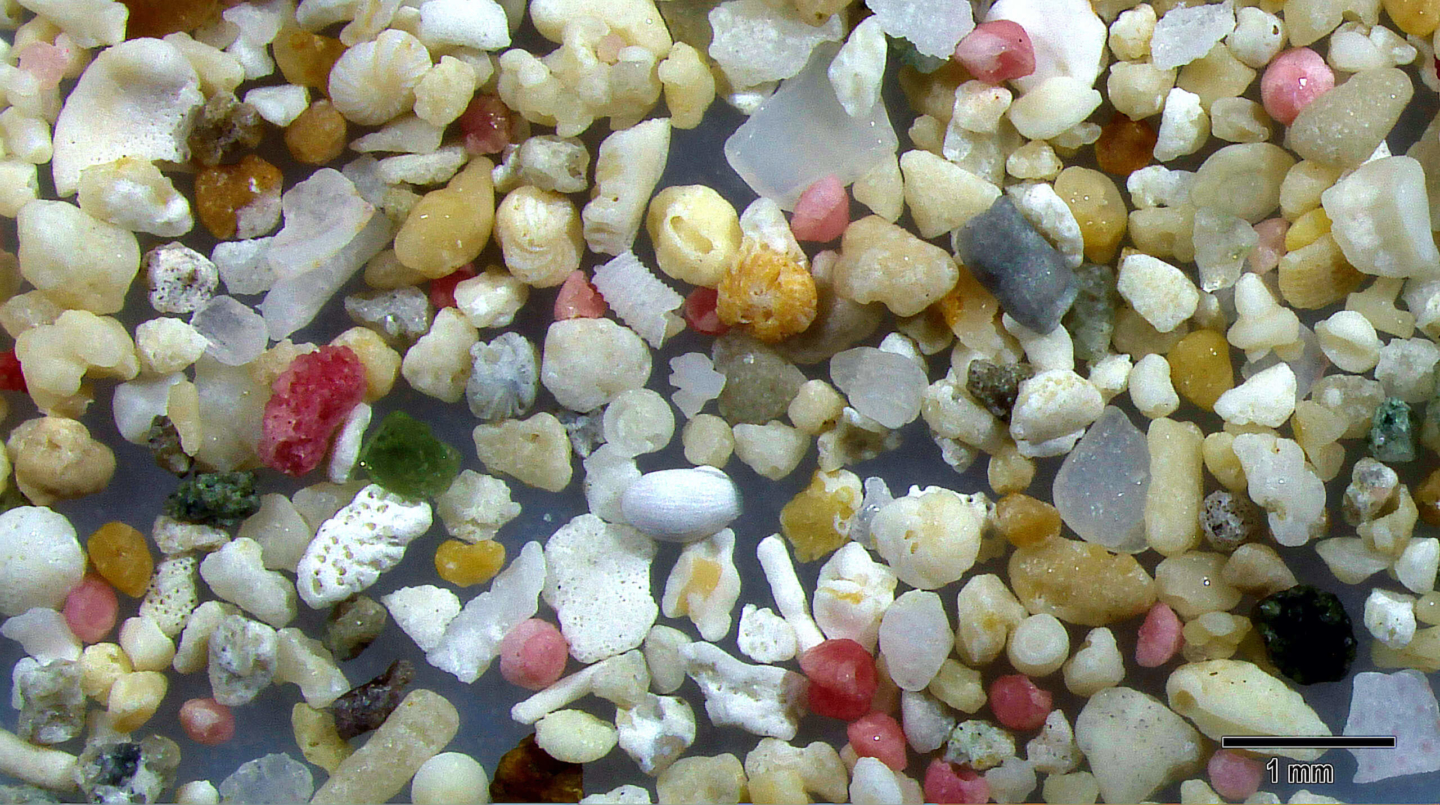
This high magnification has several pink and red forams, several tan and white forams ,white rods of coralline algae in the lower middle of the image, and a fragment of a tube worm with parallel groves in the center of the image.
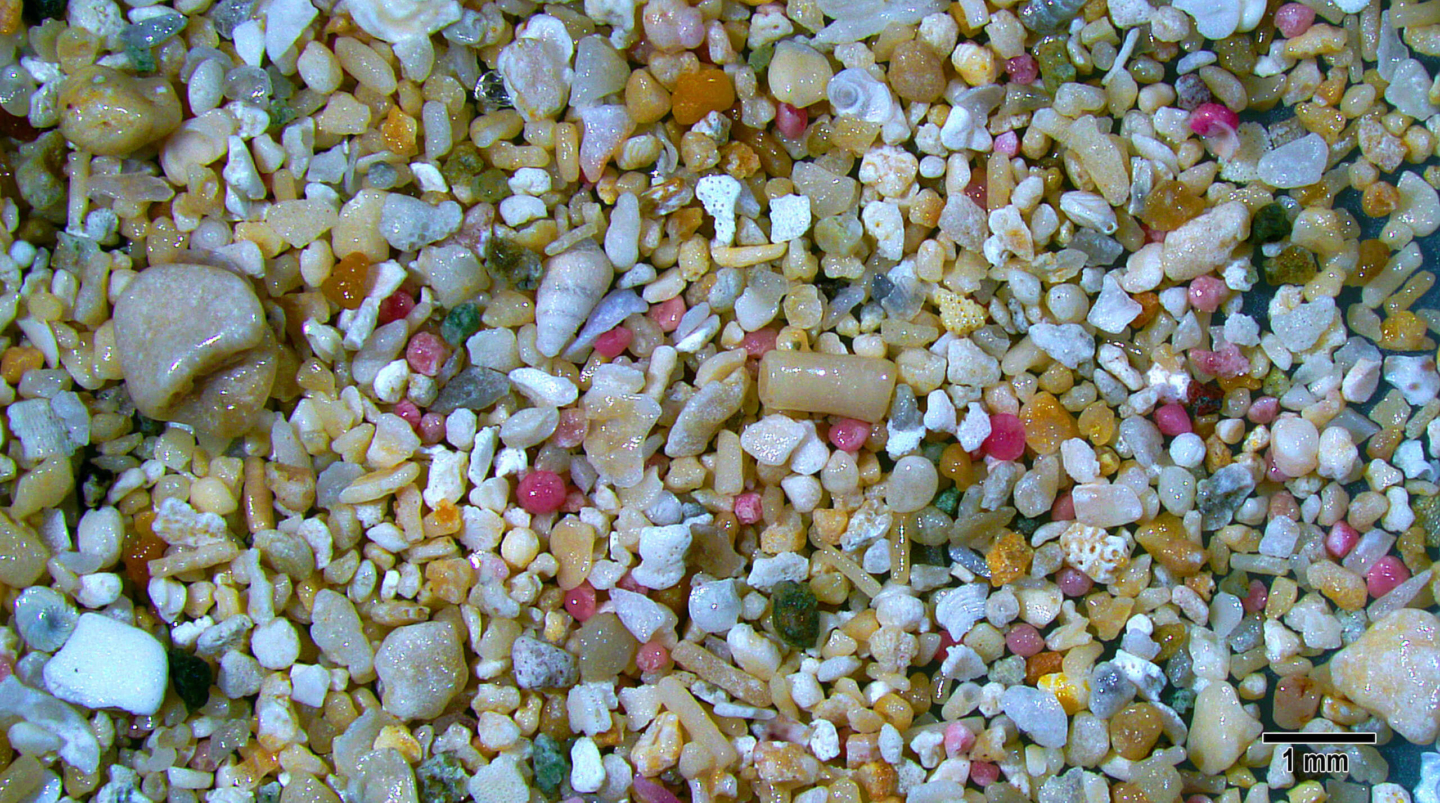
This colorful mixture of sand grains includes various biogenic sand grains, scattered pink and red foraminifera, plus a tan rod-shaped fragment of calcareous algae and a faintly striped conical mollusk shell both in the center of the image.
